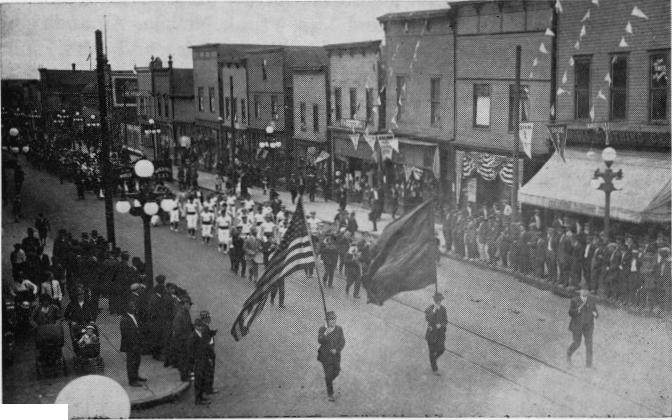
Summer festival parade June 20, 1916 on Pine Street in old Hibbing.
emigrated to Russia; two of them, Wäinö Eskeli and M. Mukala even sent `greetings' back to Hibbing via newspapers.
Once again, however, the cultural activities rather than the political faiths are what these societies are best remembered by. The biggest workers' organization, the Workers Club, which had 140 members even after the schism, engaged actively in the usual patterns of auxiliary cultural endeavors. Brass bands appeared very early; in a chronological listing of their directors, the first was Waldemar Eklund, on the scene in 1905. Later directors were, according to Edith Koivisto, the Mssrs. Hongel, Nurmio, Gröndahl, Ahola and Hautala. Of these, Edward Gröndahl directed just prior to World War I an apparently independent band named Kaiku (Echo) which nevertheless rehearsed at the Workers Club and which included many members of that society among its players. During most of the period of its existence, the Socialist Chapter No. 2 also maintained a band, which was under the direction of the same Mr. Gröndahl. Other groups were conducted by Hugo Rosendahl and Aapeli Laitinen.
Numerous choruses sang under the sponsorship of these societies, and among their directors appear the names of Carl Loven, Victor Taipale, Esther Huovila, Irja and Laura Wuopio, and Edith Koivisto. All of these persons were involved with several different groups, while Urho Valo worked exclusively within the Workers Club and Hemming Hautala and Lily Laakso only in Socialist
522